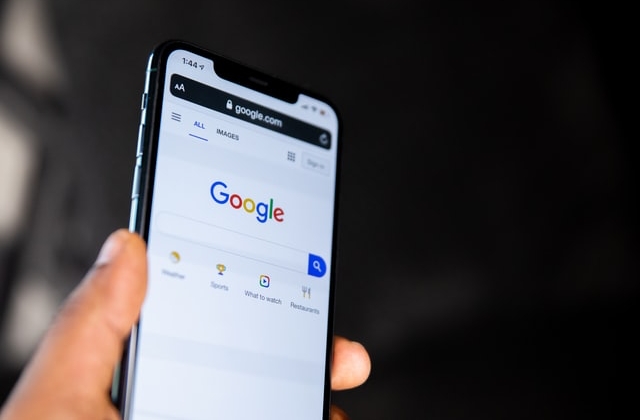Google revealed it made the decision to slash its in-app payment fee in South Korea by half. From 30%, a new policy will implement just a 15% fee, and this will take effect in October.
The lowered in-app payment fee is for content platforms, so all digital content producers of novels, web-based comics, audios and more, on Google Korea’s platform are set to benefit from the new scheme.
Google’s program for content providers
Pulse News reported that sources shared on Wednesday, June 23, that Google is set to launch its Content Accelerator Program that will manage all domestic and overseas digital content firms with a partner fee of 30 %. In Korea, the fee is reduced, and this will reportedly help Naver and Kakao, the leading content providers in the country, to save as much as ₩250 billion or about $220 million.
It was added that there are a number of digital content providers in the region and most of them use Google as the platform to offer their services both in local and global settings. Some of the big names in this field of business include Ridibooks, Lezhin Comics, Yes24, Naver’s Webtoon, and Kakao’s Piccoma, Daum Webtoon, and Kakao Webtoon.
With the cut in Google’s in-app payment, these companies will surely earn better revenues than before. Certainly, this is a big improvement, especially since the American tech company has been continuously criticized for the fees it collects.
Google updates its terms of service
In related news, The Korea Herald reported early this month that Google introduced changes to its term of service. Industry insiders agree that this move will significantly help in boosting company income.
Based on the report, Google is now allowing YouTube to put ads on videos created and posted by all platform users. It does not matter now if the creator’s channel is big or not, it will still be eligible for the ads.
In the past, small-time content creators did not qualify for Google’s partner program for ads on videos. Finally, it was said that this arrangement would also be beneficial to Google’s YouTube since it can push users to sign up for YouTube Premium membership to watch ad-free videos.



 Platinum Surges to Record High as Supply Crunch and Policy Shift Drive Historic Rally
Platinum Surges to Record High as Supply Crunch and Policy Shift Drive Historic Rally  Hanwha Signals Readiness to Build Nuclear-Powered Submarines at Philly Shipyard for U.S. Navy
Hanwha Signals Readiness to Build Nuclear-Powered Submarines at Philly Shipyard for U.S. Navy  Tokyo Core Inflation Stays Above BOJ Target, Strengthening Case for Further Rate Hikes
Tokyo Core Inflation Stays Above BOJ Target, Strengthening Case for Further Rate Hikes  AstraZeneca’s LATIFY Phase III Trial of Ceralasertib Misses Primary Endpoint in Lung Cancer Study
AstraZeneca’s LATIFY Phase III Trial of Ceralasertib Misses Primary Endpoint in Lung Cancer Study  Hyundai Recalls Over 51,000 Vehicles in the U.S. Due to Fire Risk From Trailer Wiring Issue
Hyundai Recalls Over 51,000 Vehicles in the U.S. Due to Fire Risk From Trailer Wiring Issue  John Carreyrou Sues Major AI Firms Over Alleged Copyrighted Book Use in AI Training
John Carreyrou Sues Major AI Firms Over Alleged Copyrighted Book Use in AI Training  Japan Revises Economic Growth Forecast as Stimulus Fuels Consumption and Investment
Japan Revises Economic Growth Forecast as Stimulus Fuels Consumption and Investment  BOJ Minutes Reveal Growing Debate Over Interest Rate Hikes and Inflation Risks
BOJ Minutes Reveal Growing Debate Over Interest Rate Hikes and Inflation Risks  US and Japan Fast-Track $550 Billion Strategic Investment Initiative
US and Japan Fast-Track $550 Billion Strategic Investment Initiative  Oil Prices Ease in Asia as Geopolitical Risks Clash With Weak Demand Outlook
Oil Prices Ease in Asia as Geopolitical Risks Clash With Weak Demand Outlook  Warner Bros. Discovery Shares Slide Amid Report of Potential Paramount Skydance Lawsuit
Warner Bros. Discovery Shares Slide Amid Report of Potential Paramount Skydance Lawsuit  TSMC Honors Japanese Chip Equipment Makers With 2025 Supplier Awards
TSMC Honors Japanese Chip Equipment Makers With 2025 Supplier Awards  U.S. Stock Futures Edge Higher as Holiday-Thinned Trading Persists
U.S. Stock Futures Edge Higher as Holiday-Thinned Trading Persists  U.S. Stock Index Futures Steady After S&P 500 Hits Record on Strong Economic Data
U.S. Stock Index Futures Steady After S&P 500 Hits Record on Strong Economic Data  BlackRock-Backed Global Ports Deal Faces Uncertainty Amid Cosco Demands
BlackRock-Backed Global Ports Deal Faces Uncertainty Amid Cosco Demands  Russian Stocks End Lower as Energy and Mining Shares Weigh on MOEX Index
Russian Stocks End Lower as Energy and Mining Shares Weigh on MOEX Index  DOJ Reaches Settlement With Blackstone’s LivCor Over Alleged Rent Price-Fixing
DOJ Reaches Settlement With Blackstone’s LivCor Over Alleged Rent Price-Fixing 































